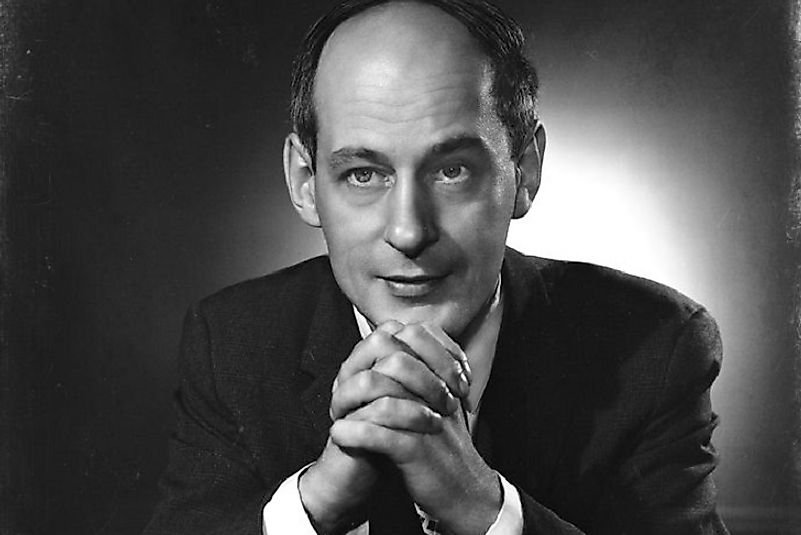The Quiet Revolution Of Quebec, Canada

The Quebecois socioeconomic landscape underwent a major overhaul in the post-World War II era, leading to a separatist movement in the Canadian province. The Quiet Revolution refers to the social, economic, and political changes that swept through Quebec beginning 1960. By the end of the revolution it was a highly urbanized, industrialized and secular Quebec.
Background of the Revolution
Before the revolution, Quebec had been characterized by social conservatism and isolation under the Duplessis regime, a term coined by the then-Prime Minister Maurice Duplessis. The province became starkly contrasted from the rest of Canada by rejecting contemporary values in place of traditionalism. The more agrarian province of Quebec had subsequently fallen behind from the rest of the rapidly industrializing Canada. Quebec had a high poverty rate and low education standards than the rest of Canada, and this led to their lack of representation in executive ranks in the companies of the province.
Socioeconomic Landscape in Canada after World War II
Resources in the province had been for years developed by foreign investors, most of whom were English speakers. The French Canadians who resided in Quebec had been forced to play a second role in economic and social matters. The Quebec population developed a high level of nationalism and sought to gain equality and respect from the rest of Canada. The pent up desire for reforms set the Quiet Revolution in motion.
Key Figures in the Separatist Movement
In the quest for equal rights for Quebec’s population arose a movement which sought Quebec’s independence from Canada. The movement was fueled by economic disadvantages experienced by French Canadians. The movement gained ground in 1968 with the formation of the Parti Québécois by René Lévesque. This party used concession as a means to relay its demands for independence, in contrast to the previous violent organizations such as the Front De Libération Du Québec in 1963 and L’Armée de Libération de Quebec. Levesque was the ultimate separatist figure and led Quebec separatists on the quest to acquire political power from Canada.
The Role of a Shift in Religious Values
The Catholic Church and its virtues had thrived in Quebec during the Duplessis regime, especially in health and educational matters. At the start of the Revolution was a wave of secularism in Quebec’s society, which had previously been anchored in Christian values. Radical views began to take root in Quebec. Marriage was viewed as an option one may or not undertake, and sex as a means for recreation and not only for reproduction gained more acceptance. Women’s status in Quebec had previously not been seen as politically or socially significant, and many had opted to join religious orders to engage in educational and hospital services offered by the Catholic Church. At the start of the revolution, however, many women opted out of religious lives to participate in the rapidly industrializing Quebec.
Social and Economic Reforms
Social and economic reforms were first championed by the government led by the Liberal Jean Lesage starting in 1960. Some of the most notable reforms were done in the education sector. A Ministry of Education was founded in 1964, which overhauled the curriculum to produce a more skilled workforce. The school system which had previously been run by the Catholic Church was restructured to educate students in disciplines such as engineering, business, and science. The government nationalized hydroelectric utilities and integrated them under Hydro-Quebec. Lesage established the ministries of federal-provincial affairs and cultural affairs and also created the Quebec pension plan. He also established the General Investment Corporation and a public hospital network. The voting age was reduced to 18 and women were granted more rights than they previously had. Modernization efforts improved infrastructures such as hydro-electric dams and highways. With the modernization and industrialization of Quebec came the decline of the Catholic Church. Morals were liberalized, Western culture such as new forms of music was embraced, and the young people began to freely express themselves. A new breed of French-Canadian artists began to emerge in literature and music and redefined Quebec’s culture.
Move for Independence from Canada
A renewed sense of nationalism in Quebec’s society in the 1960s created the ideal conditions for a separatist movement. Some Quebec’s inhabitants became more aware of the existing ethnic discrimination and demanded autonomy from Canada. The movement was particularly aggressive in matters of language and economic power. The separatists sought the recognition of French as a national language and better living standards for Quebec’s society. A section of separatists resorted to using violence through bombings and robberies. Rene Levesque was at the helm of the independence movement and his party, the Parti Quebecois, won provincial elections in 1976. The party led Quebec on two referendums to achieve independence but was unsuccessful in both.
Legacy of the Quiet Revolution
The Quiet Revolution is particularly significant for opening up Quebec to the world. The revolution redefined Quebec’s culture as it is accepted today and promoted the rise of the French middle class. Although the economic reforms slowed down with the recession in the 1980s, the impact of the revolution is still visible today. The revolution has however been criticized for the debt burden the province shoulders till date.











